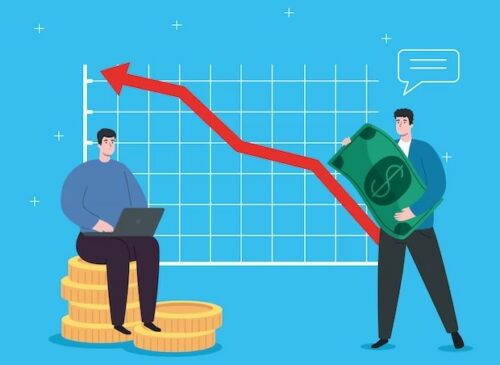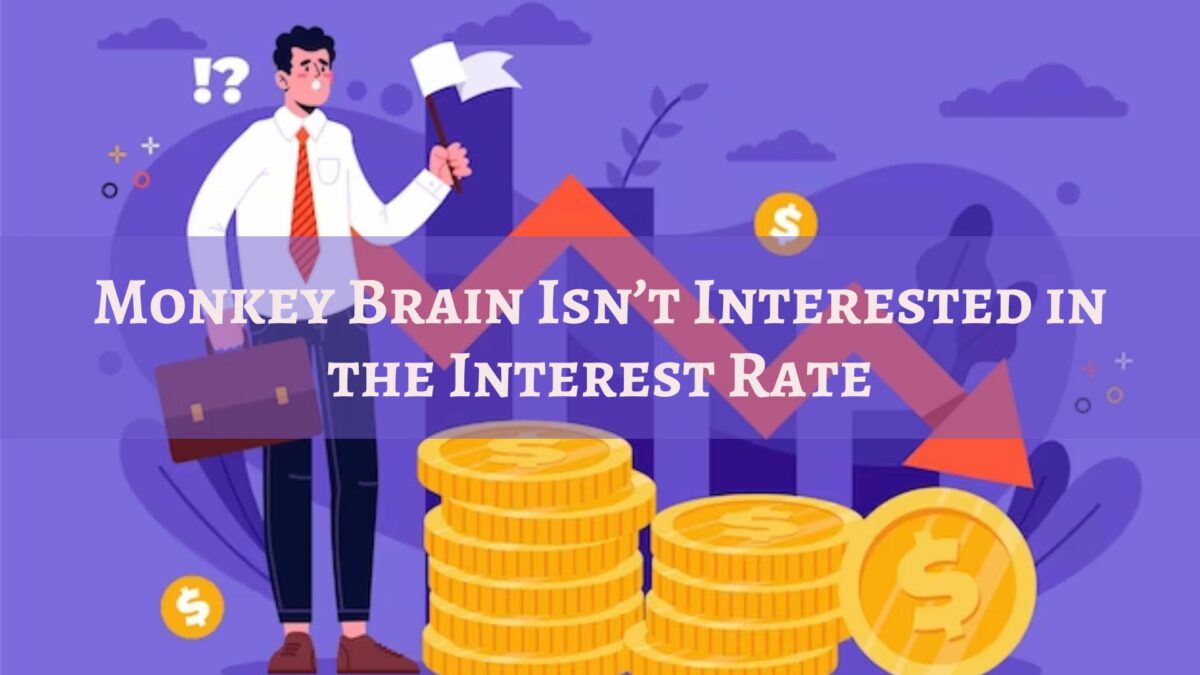“Car designers are just going to have to come up with an automobile that outlasts the payments.”
– Erma Bombeck

It seems that every time I turn on a Fort Worth radio station, I hear advertisements for car dealers. Never, ever do I hear those advertisements talk about the price of a car. Have you ever heard a car advertisement saying “You can get a new car for as low as $24,999!”???
What do you hear instead?
“Payments as low as $249 a month!”
They’re playing a trick on you and taking advantage of a hole in Monkey Brain’s thinking.
Let’s take a little test. It’s hypothetical but stick with me.
Let’s imagine that you’re buying a car. The car costs $10,000, but you finance it with the dealership. You’re going to make 12 monthly payments of $1,000 each and have the loan paid off in a year.
What’s the interest rate on that loan?
Take a second.
Now, let’s keep reading.
If you’re like most people, you answered 20%.
The answer?
35.1%
If you thought the rate was 20% or lower, then you’ve fallen for a common trap that Monkey Brain falls into all of the time called the exponential growth bias. First explained by Dartmouth’s Victor Stango and Jonathan Zinman, the exponential growth bias means that we’re more likely to underestimate the costs of short-term borrowing and overestimate the present value of money compared to its future worth.
Before we look at how this bias can affect your finances, let’s look at why it happens.
For those of you who are new here, our brains have two main components. There’s the prefrontal cortex, or the thinking you. It’s refined. It thinks of the future. If you’re having thoughts right now, then it’s probably due to the prefrontal cortex. That Thinking You is the one who pushes you away from the dinner table when you’re full rather than ordering a double banana sundae even though it sounds really good.
The other part of our brain is the limbic system. It’s the brain structure that got us through caveman days. When we saw a woolly mammoth, we didn’t have time to contemplate its beauty, consider whether or not it had feelings or a family of little woolly mammoths back home, or enjoy the play of light against its fur. Instead, we had to decide: run or attack. The ability to make a rapid and correct decision determined whether or not we had dinner, were dinner for the mammoth and lived to see another day. Thus, our brains needed to be quick and decisive, and emotions ruled the roost. Fear? Run! Hunger? Hunt!
We share the limbic system structure with monkeys, which is why I call the limbic system Monkey Brain. Monkey Brain doesn’t like to think about the future, because, after all, when you were a caveman, your future horizon was very short. You were concerned with eat or be eaten decisions, not what you wanted your cave to be decorated with in 30 years’ time. So, too, it is with Monkey Brain. He wants pleasure now, and will gladly sacrifice your retirement account for a man cave or Jimmy Choo shoes right now.
Thus, because of Monkey Brain’s tendency to overvalue the present and discount the future, it’s easy for him to come up with alternative explanations.
You: “Paying $2,000 in interest in one year for a $10,000 loan is pretty expensive.”
Monkey Brain: “STUPID HUMAN. 2,000 DIVIDED BY 10,000 IS 20%. EVEN MONKEY KNOW THAT MATH. HUMAN DUMBER THAN MONKEY BRAIN.”
You: “Oh yeah. You’re right! Get a pen so I can sign this loan paperwork!”
Any time we have potential exponential growth, that’s hard for Monkey Brain to handle. There are squares and powers and all of those tough math issues that Monkey Brain doesn’t like to deal with. So, he’s going to try to make things as simple as possible for him to wrap his little monkey head around. To do so, he assumes linear math instead of exponential math, which is why you most likely thought that the interest rate was 20% instead of 35.1%.
How the exponential bias affects our wallet

There are two complementary ways in which the exponential bias affects our wallet.
The shorter the term or the higher the interest rate, the more Monkey Brain discounts the rate.
In the research that Stango and Zinnan conducted, they looked at what interest rates people thought different loan terms had. It turns out that as the total repayment went up (in our example, it was $12,000), the bigger the gap between the perceived interest rate and the actual interest rate grew.
The same gap growth happened as the term decreased. The longer the loan period, the closer people were to getting the interest rate right. The shorter the period, the bigger the gap grew.
So, when you get a mortgage, you’re much more likely to understand the interest rate and the payments than if you were to get a hard money loan to try to do a real estate flip or if you got a car loan that just talked about your monthly payment.
But, this bias isn’t just limited to borrowing. It also applies to saving and investing.
The longer in the future the payoff for an investment is, the more we discount it.
People who suffered from exponential growth bias are also more likely to be in short-term, “low-risk” investments like CDs or short-term bonds, and they are underinvested in stocks. Why? Because Monkey Brain wants his money back as soon as possible so he can go spend it! That man cave ain’t gonna build itself, son!
They’re also much less likely to save money for the future. Why save, after all, when the future, according to Monkey Brain, is so worthless?
Since inflation eats away at the purchasing power of your money over time, you need to take some risks with your money in order to, in the future, maintain the ability to buy the same stuff that you do now.
Unsurprisingly, the combination of not saving and not taking appropriate risks in investing means that households who exhibited strong exponential growth bias had between 7% and 33% less wealth than their least-biased peers observed in the Dartmouth study.
I thought the interest rate was 20% or lower! What do I do?
There was one group of people who had strong exponential growth bias yet were just as rich as those who had no exponential growth bias.
Those people used external advice.
Yup, they used folks like financial planners to help them deal with their biases. They were self-aware enough to acknowledge that they had issues and to do something about it. If they made bad decisions and they knew it, they got others to help them with their decision-making and changed their family’s money situation.
What about you? Do you have exponential growth bias?
Author Profile
- John Davis is a nationally recognized expert on credit reporting, credit scoring, and identity theft. He has written four books about his expertise in the field and has been featured extensively in numerous media outlets such as The Wall Street Journal, The Washington Post, CNN, CBS News, CNBC, Fox Business, and many more. With over 20 years of experience helping consumers understand their credit and identity protection rights, John is passionate about empowering people to take control of their finances. He works with financial institutions to develop consumer-friendly policies that promote financial literacy and responsible borrowing habits.
Latest entries
 Low Income GrantsSeptember 25, 2023How to Get a Free Government Phone: A Step-by-Step Guide
Low Income GrantsSeptember 25, 2023How to Get a Free Government Phone: A Step-by-Step Guide Low Income GrantsSeptember 25, 2023Dental Charities That Help With Dental Costs
Low Income GrantsSeptember 25, 2023Dental Charities That Help With Dental Costs Low Income GrantsSeptember 25, 2023Low-Cost Hearing Aids for Seniors: A Comprehensive Guide
Low Income GrantsSeptember 25, 2023Low-Cost Hearing Aids for Seniors: A Comprehensive Guide Low Income GrantsSeptember 25, 2023Second Chance Apartments that Accept Evictions: A Comprehensive Guide
Low Income GrantsSeptember 25, 2023Second Chance Apartments that Accept Evictions: A Comprehensive Guide

